People still can’t comprehend why there is so much hair on our bodies.
Not only does hair grow from the scalp but it also appears on almost every part of our body, apart from the hand’s palms and feet’ soles. It acts as a protector of our body: body hair keeps us always warm; nose hair avoids dust and dirt from penetrating our respiratory systems; eyebrows work to prevent sweat and the like from flowing into our eyes.
The hair on each body is different from each other. Have you ever wonder why your hair looks thin why your buddies’ are thick and strong? That’s the matter of the width of human hair.
In today’s post, Lewigs will delve deeper into the breadth of hair (or the thickness of human hair) to clear all your curiosity about this problem.
Table of Contents
Human Hair Structure
The very first thing to look at is how the hair strand is built.
Research has revealed that human hair is made from keratin, water, pigments, and lipids, of which the percentages are 80%, 10-15%, and 5-10% respectively. Each strand contains 3 layers: the cuticle, cortex, and medulla.
The cuticle forms the outer layer of the hair with overlapping cells, which work to prevent the inner layer from damage and control the water content of the fibers.
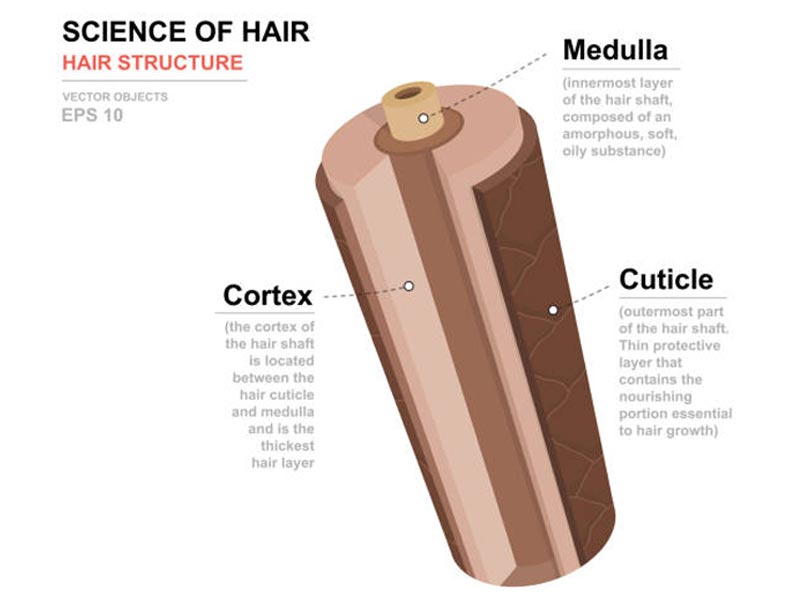
The cuticle layers envelop the middle part, which is called the cortex. This part carries approximately 90% of the total width and weight of human hair. Cortex determines the strength, elasticity, as well as the color of the hair due to housing the pigment (melanin) and elongated cells. The changes after dyeing, bleaching, or styling the hair all occur in this layer.
The innermost layer of a hair strand is medulla – the marrow of the hair. However, this layer does not appear in every hair type. It tends to appear in thick and coarse hair. In contrast, naturally thin hair does not have this kind of layer.
On the whole, the width of human hair is dependent on the two layers: cuticle and cortex.
What is the average width of human hair?
Factors determining the thickness of a human hair
What factors decide the size of a human hair? It’s nothing but your gene does that work.
Scientific study has proved that genetics is the major contributing factor that decides the texture of human hair. Whether your hair is straight, wavy, curly, or else all depends on your blood origin. It is easy to comprehend, as we could see the differences in hair texture from different bloods. While the pale-skinned people tend to have bright color and straight hair, the black hair is often short and curly.

Genetics also plays a vital role in determining the thickness and width of each individual human hair strand. Different ethnic backgrounds would entail different average width of a human hair. African people are always believed to possess the thickest and strongest hair in the world, while European hair, especially the blonde hair, has long been known for their fine hair texture.
Hair color is also a significant factor that determines how thick is a human hair. For example, red hair will be finer than brown and black hair. Regarding black hair, hair from Asian-rooted people will be thinner than African people.
Are there any other things that affect the width of a human hair in microns? Weather and age are also considerable. Hair strands tend to become thicker in warm weather conditions. The hair of babies is finer than that of adolescences, also.
The average width of human hair in micrometers and in inches
The scientific notation used to indicate the width and thickness of human hair is μm (micrometers), rather than mm (millimeters) and inches. Micrometers, also known as microns, are the unit of length delivered by SI – the International System of Units. 01 micron is equal to one million of a meter, or 0.001 mm or 0.000039 inches.
There is no precise value for the thickness of human hair in micrometers. The diameter of human hair is proved to range between 17 μm to 181 μm (Brian, 1999). Flaxen hair (yellowish-gray) is the thinnest with an average width of 17–50 µm, while black hair is believed to be the thickest with an average thickness of 56–181 µm.
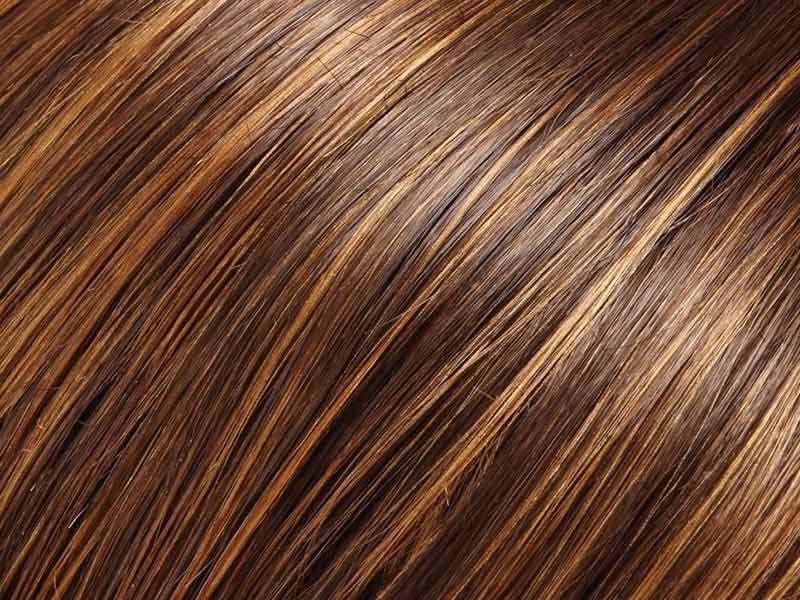
Smith Graham, in his journal Industrial metrology published in 2002, suggested taking a nominal value of 75 μm. However, this figure is subject to imprecision due to the variety of hair textures.
The thickness of human hair can also be distinguished by blood. In Europe, your hair will be considered thin if the diameter of human hair is 0.04 to 0.06 mm, normal if between 0.06 and 0.08 mm, and thick if between 0.08 and 0.1 mm. In comparison, Asian hair is thicker. The average width of Asian hair is from 0.08 to 0.12 mm.
Fun facts about the diameter of human hair
In Myanmar, the hair’s breadth, or width of human hair, has a formal analog in their length measurement system. The smallest unit in this system is “tshan khyee” in Burmese, and this word is literally the thickness of human hair in English. 10 “tshan khyee” would make up a “hnan”, which is equivalent to the size of a Sesamum seed. 6 “hnan” form a “mooyau” (a type of grain) and 4 “mooyau” would make up an “atheet” (equal to the breadth of a finger).
You might also want to read:
- How Fast Does Human Hair Grow?
- Human Hair Color 101: All You Need To Know About
- Fleas In Human Hair Symptoms & How To Stop This Menace
- Non-Remy Hair: DON’T Fall For This Low-Rated Thing!
How to measure the average thickness of human hair?
Have you ever wonder how the scientists have measured the size of a hair strand? Obviously, you cannot use a normal ruler to record it. To do this examination, they have made use of the laser pointer.
Simply speaking, they will shine the laser light onto the wall of a dark room, making sure it passes through the hair strand sample. The hair would diffract the laser light. By measuring the size of the scatter that the diffractions cause, they were able to measure the width of the hair strands they are testing.
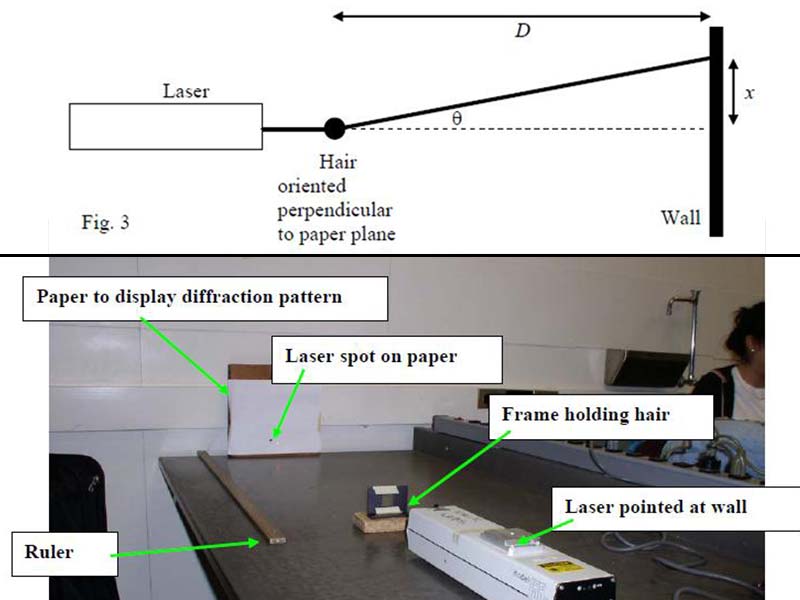
There will also be an equation in which they could calculate the exact result of Remy human hair size.
We won’t talk into this problem deeper, as it involves scientific terminologies as well as specialized knowledge, which we believe normal people won’t comprehend no matter how many times you try to read.
What does hair’s breadth matter?
With all the figures above, perhaps you have got quite an idea about what is the width of human hair. However, what’s the point to know these things? How is it important?
Aside from providing you with the scientific statistics, Lewigs just want to aware you on the definition of this term, because there have been so many cases that people mistake the width and diameter of a single strand to the density or the thickness of your hair.
Guys, width and density are two different things.
While the width, or hair’s breadth, refers to the size of an individual hair strand, hair density indicates the closeness of the strands on your scalp. Therefore, if the staff at any hair vendors or stores ask you what level of density you want, then what he/she wants to know is the density level of your hair, or how much hair it would be on your scalp.
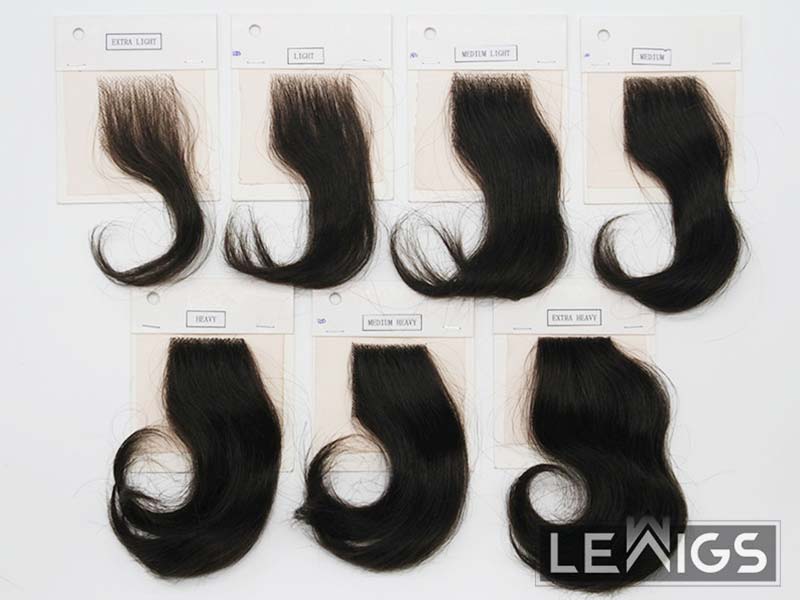
If there are any questions related to hair thickness, then you just need to say whether your tresses are fine or thick. That’s all to provide with the seller and hairstylists. There is no need to calculate the exact record for the hair’s breadth.
In terms of hair density, there are different levels in hair density chart. At Lewigs, we apply a standard chart with 7 levels, including 4 major levels and 3 less-seen ones. You can refer to our article: What Does Hair Density Reflect? How To Measure It Right? to see how dense your real hair is. As a result, you will then know the density level that your hairpieces should be made upon.
The 3 popular levels in the hair density scales are light, medium light, and medium, which refer to 130%, 150%, and 180%. So, what do these numbers reflect?
– Light (130%): at this level, the hair is considered to be thin, but it is still acceptable. Even though it is easy to reveal your scalp skin, it appears to be the most natural-looking option for people with thin real hair.
– Medium-light (150%): the wig and toupee look extraordinarily natural, and is the most popular choice that both ladies and men have opted for.
– Medium (180%): if you have strong and healthy thick hair, then you should choose this level. It is denser than medium-light but still not too dense to look fake.
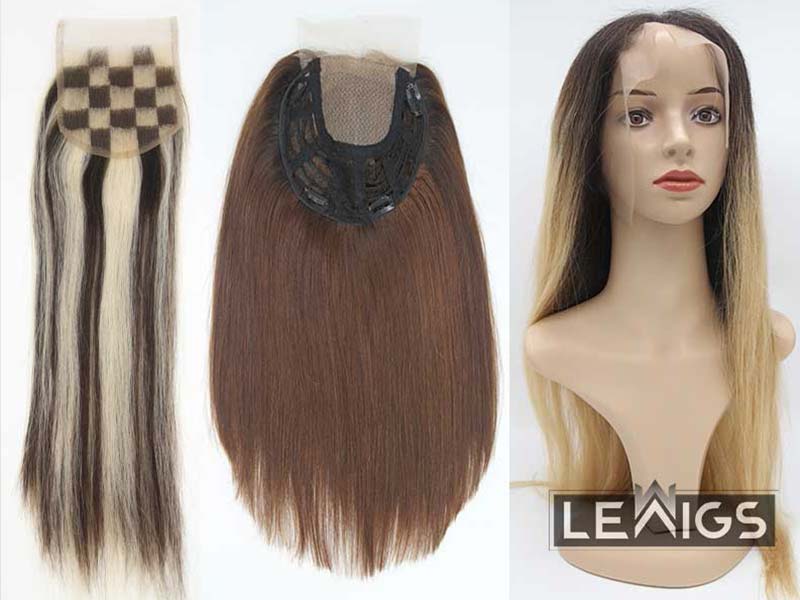
To wrap things up
If your hair is strong and healthy, all the things like the width of human hair or thickness of human hair are never a matter to care for. In contrast, if you are suffering from excessive hair shedding, pattern hair loss, or a receding hairline, then it would be of significant help. When you have to go for a wig or toupee to cover your balding spots, you should consider the density and hair width well in advance.
What Lewigs are saying is, ask yourself if your hair strands are fine or thick so that you could go for a human hair system with quite the same hair texture. Furthermore, how dense is your hair? Don’t forget to check it out in order to get the most natural-looking hairline.
But if you feel these things are too complicated to figure out on your own, contact Lewigs. We would offer free advice and consult you on everything you are wondering about. Working to provide the best wig-wearing experiences for both men and women, Lewigs sees it’s our responsibility to provide the exact advice so that our customers won’t be distracted when shopping for their hair systems.
Additionally, we have a wide array of top-notch human hairpieces for both men and women, ranging from hair loss solutions (hair toupee for men and toppers for women) to fashionable items like wigs. Please feel free to browse our website to see them or get in touch with us via our hotline for a customized order.
Lastly, Lewigs hope that this article could somehow help you wrap an image of the width of human hair. Now that you have been covered with all the essentials, have you known how thick and dense is your hair? Let us know by commenting below or WhatsApp-ing us at any time.
Have a nice day!


